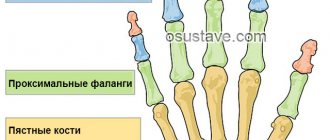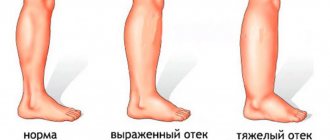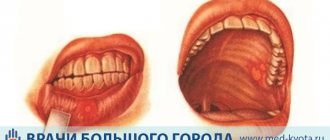Numbness of a limb is when an arm or leg becomes “woolly”, sensitivity is lost, or it burns and tingles as if with many small needles.
This often happens when peripheral nerves are compressed, say, if you “sit out” your leg or “lay down” your arm in your sleep. Numbness usually passes quickly and is not accompanied by other alarming symptoms.
Less commonly, numb limbs can indicate problems and illnesses, from a lack of B vitamins and folic acid to diabetes, multiple sclerosis or a brain tumor. But in these cases there must be other serious symptoms.
Multiple sclerosis
An autoimmune disease with a chronic course affects mainly young people aged 15 to 40 years. Multiple sclerosis is extremely rare in a child or an elderly person. The cause of this pathology has not yet been established, despite its widespread prevalence.
One of the first symptoms is numbness in various parts of the body, which is caused by damage to several parts of the nervous system at once.
Primary manifestations are as follows:
- tingling sensation, slight burning sensation and numbness;
- weakness in arms or legs;
- visual impairment – double vision, blurriness, blurred vision;
- limited movement.
Multiple sclerosis is considered an incurable pathology, and patients are prescribed exclusively symptomatic therapy aimed at improving the quality of life and prolonging periods of remission.
Treatment of this pathology
Treatment methods depend on the disease. Numbness in the feet can be treated with anti-inflammatory and painkillers if nerves are pinched. Physiotherapeutic procedures are often used. In case of circulatory disorders, systemic therapy is carried out aimed at strengthening the vascular walls, diluting fluids, etc.
If the cause of the discomfort is a hernia or other abnormal formations, surgery may be performed. Surgical methods are used relatively rarely, as they have a number of contraindications and side effects. In addition, there is a risk of relapse.
If your leg goes numb
If one lower limb or both goes numb, this may be a sign of cauda equina syndrome, herniated disc, or multiple sclerosis.
In cauda equina syndrome, all 18 nerves located in the lumbar spine are compressed. This may occur due to a hernia, inflammation, tumor, or stenosis (narrowing) of the spinal canal. The result is not only numbness in both legs, but also lower back pain, problems with urination, defecation, and erectile dysfunction.
Radiculitis associated with a hernia occurs due to the fact that the nucleus pulposus, which is located in the intervertebral disc, breaks out and compresses nearby nerve endings. With a hernia, not only numbness occurs, but also back pain and weakness in the limbs. Symptoms usually go away within 6–8 weeks. If this does not happen, the doctor may prescribe more aggressive treatment, including surgery.
With sciatica, most often only one leg goes numb. Sciatica, or lumbosacral radiculitis, is compression of the sciatic nerve, which also causes pain in the lower back. The cause of sciatica can be a herniated disc, spinal stenosis, piriformis syndrome (compression of the sciatic and gluteal nerves by the piriformis muscle), bone fractures and pelvic injuries, tumors. Usually, along with numbness, a person feels aching pain, tingling or burning. Treatment depends on the cause of sciatica.
Physiological reasons
Numbness is often associated with awkward posture. When staying in a stable position for a long time, blood vessels and arteries are compressed. This leads to poor circulation. To get rid of discomfort, a person just needs to change his position or do exercises to restore circulation. Poor circulation may be associated with uncomfortable clothing or shoes, the use of a bandage, elastic bandages and other corrective devices if they were chosen incorrectly.
The cause of isolated attacks may be hyperventilation. Rapid breathing negatively affects metabolism and disrupts the balance of calcium and magnesium. There is a change in the acidity level of biological fluids. As a result, a person experiences fainting, tingling (including in the limbs), anxiety, etc. The development of hyperventilation is often associated with psychological discomfort.
Overexertion and poor hygiene can cause numbness. If skin growths are present on the soles, the anatomical location of the joints is disrupted. The most dangerous is a poor-quality pedicure, during which the master leaves part of the skin near the edge of the heel. Nerve endings and blood vessels are compressed, causing pain and tingling. When overexerted, muscle fibers are injured, which can lead to hard growths in the future.
Pregnant women often experience numbness. Discomfort bothers them in the morning. This is due to increased accumulation of fluid in the tissues while in a horizontal position. Sometimes numbness occurs due to physiological changes and hormonal fluctuations that cause an imbalance of nutrients.
When your hand goes numb
If part of an arm or leg is numb, the cause may be a herniated disc, thoracic outlet syndrome, a tumor that presses on the nerve plexus, brachial plexitis, carpal tunnel syndrome, and common peroneal nerve compression syndrome.
With carpal tunnel syndrome, the wrist or hand (thumb, index, middle, and part of the ring finger) becomes numb or painful. This usually happens to those who work a lot on the computer, knit, drive a car for a long time, etc. Why? The median nerve, which passes to the hand through a “tunnel” (carpal tunnel) of three bones and ligaments, is pinched. Compression of the median nerve below the elbow and above the wrist causes numbness not only in this area, but also around the hand at the base of the thumb. This happens if, for example, the tendon, which is located next to the median nerve, is irritated and therefore enlarged.
Which doctor should I contact?
If you have the first symptoms of numbness, you should first consult a general practitioner. The therapist can diagnose the pathology independently, or may refer you to another specialist.
The choice of a specific specialist depends on other signs of the disease that accompany numbness. Paresthesia can be detected during a preventive medical examination.
You should not hesitate to contact a specialist if the problem has been observed regularly for a long time. Especially if the loss of sensitivity is definitely not related to parts of the body being in an awkward position.
Paresthesia can be a symptom of a serious pathology that requires immediate diagnosis and treatment.
The specialist asks the patient questions methodically, focusing on potential causes of the problem.
The consultation includes questions that will help the specialist identify the type of disorder:
- When did paresthesia begin?
- How quickly it developed;
- Are there any accompanying symptoms, discomfort in the body;
- Did the numbness begin after a situation, for example, after pressure on a limb, injury, or uncomfortable position?
The doctor needs to know whether the patient has previously suffered from diseases that may contribute to paresthesia: diabetes, HIV, kidney problems, strokes or arthritis.
An important fact is whether the patient’s family had any relatives with the listed disorders, or whether the patient was taking medications or narcotic substances.
The cause of paresthesia determines the further treatment plan. For example, if the discomfort is caused by a disorder of the central nervous system, then a neurologist will prescribe treatment.
If sensitivity is lost due to another pathology (oncological disease, hormonal disorders, osteochondrosis), the therapist redirects the patient to a specialist in the current disease.
Prevention of numbness in hands and feet
To avoid problems with numbness, you should ensure the correct selection of clothes and shoes, sleep on a comfortable bed without excess pillows and feather beds. The surface of the bed should be moderately smooth and soft.
Timely detection of diseases and their treatment will quickly get rid of the main cause of numbness.
Lotin Alexander, medical columnist
29, total, today
( 172 votes, average: 4.57 out of 5)
Related Posts
Headache as a symptom: how to make a correct diagnosis?
Multiple sclerosis: symptoms and treatment
Arthritis
One of the causes of numbness in the legs may be rheumatoid arthritis, which is an inflammation of the joints. With this disease, the leg most often goes numb below the knee; the joints can become deformed, which can cause compression of the nerves and cause numbness. The cause of this disease can be a severe infection. Rheumatoid arthritis is very difficult to completely cure, so most often treatment consists of reducing the inflammatory process. In extreme cases, surgery may be required.
Other causes of numbness
If the limbs on both sides are numb, then the spinal cord may be compressed due to a tumor, injury, hematoma, abscess (abscess), or it is a matter of peripheral polyneuropathy - damage to small peripheral nerves or disruption of their function. It is usually caused by certain medications, diabetes, chronic kidney disease, vitamin B12 deficiency, Lyme disease, or HIV infection. Most drugs that cause numbness include chemotherapy. As a rule, some time after the end of chemotherapy, sensitivity returns.
Diabetic neuropathy is a fairly common occurrence in patients with diabetes. The exact cause of the damage is unknown, but it is believed that metabolic disorders and destruction of small vessels occur, which leads to nerve damage. If numbness has already occurred, it is impossible to completely get rid of it. But the condition can improve if you monitor your blood sugar levels more closely. If the numbness is significant, then you need to follow the doctor’s recommendations to avoid injury to the limbs and subsequent complications.
Exactly how vitamin B12 deficiency disrupts the formation of myelin sheaths on nerves is unknown. But if this substance is not enough, then the legs, rather than the arms, often go numb. Also, a lack of vitamin B12 is accompanied by anemia and weakness. But numbness occurs only with a very serious deficiency. With treatment, symptoms go away within 3 months; in severe cases, recovery can take a year.
When chronic kidney disease worsens, uremia occurs—products of nitrogen metabolism and other toxic substances accumulate in the blood. This leads to peripheral nerve damage and numbness. This condition (uremic polyneuropathy) is an indication for dialysis or kidney transplantation.
Lyme disease and HIV infection can cause inflammation of some parts of the nervous system. With Lyme disease, numbness does not appear immediately, but already against the background of a flu-like state, from which the disease begins. Lyme disease is treated with antibiotics.
With HIV infection, numbness often occurs due to the fact that a weakened immune system allows the development of a cytomegalovirus infection, which affects the nerve fibers. Numbness usually occurs in people who are not taking antiretroviral therapy, which can greatly improve the condition of a person with HIV. Therefore, in order for the numbness to go away, you need to start specific treatment as early as possible.
Numbness and osteochondrosis
Why is osteochondrosis not on this list? The fact is that this diagnosis is not known anywhere except in the countries of the former Soviet Union. Usually they blame him for everything that they cannot explain. Degenerative changes in the spine are normal for anyone over 40 years of age. Numbness has other, real causes that can often be dealt with. Therefore, if you are diagnosed with osteochondrosis, you should consult another specialist.
Is there a difference between numbness in the right and left hand?
Numbness of the limbs (arms) on the left often indicates that there are heart problems. Such phenomena occur due to severe stress or nervous disorder experienced.
If numbness manifests itself in stages, then it is necessary to understand the exact reason for its development. Perhaps the disease is associated with problems of the blood vessels, spine or nervous system. Often this phenomenon occurs due to existing osteochondrosis. Accordingly, as a result, changes occur in the spine - the intervertebral nerves are pinched.
Numbness of the left extremities occurs most often in people whose age exceeds 50. The numbness is accompanied by pain with cramps. Rheumatoid arthritis can also be a cause - this is an infectious disease in which infection penetrates into the joints, as a result - they become deformed and pinch the nerves.
Some pathologies are characterized by numbness of both upper extremities, but there are also diseases in which only one of them becomes numb. The left hand indicates the state of the cardiovascular system. If numbness occurs, this indicates possible pathologies of the heart or joints.
This condition often occurs before a heart attack or
stroke
, so discomfort in the left hand cannot be ignored.
If the right upper limb goes numb, this usually indicates an uncomfortable position during night rest, the development of tunnel syndrome, arthritis or osteochondrosis. This condition also occurs before a heart attack or stroke.
Vascular disorders
One of the complications of diabetes is diabetic neuropathy, damage to sensory, motor and autonomic nerves as a result of impaired blood flow in small vessels. One possible symptom is numbness in the limbs.
There is a large group of diseases - vasculitis. Autoimmune inflammation develops in the vessel wall, it thickens, becomes weakened, and scarring occurs. In the lumen of the vessel, areas of narrowing appear in which blood flow is disrupted. Various organs, including nerves, can suffer from this.
With one of the systemic connective tissue diseases - Raynaud's disease - a spasm of the small vessels that supply blood to the fingers and toes occurs. In response to cooling or stress, a feeling of coldness and numbness occurs in the fingers.
Pathological causes
Numbness of the extremities (arms and legs) can also be caused by diseases of the nervous system.
During the inflammatory process, pinching or other pathological processes occur in the nerve trunks. So, numbness of the limbs occurs in the following diseases:
- Polyneuropathy – numerous lesions of the trunks of the peripheral nervous system. Atrophy and weakness in the limbs, drying out, partial impairment of movement, and in some cases, paralysis (complete loss of function) are observed. Such “suffering of the nerves” usually occurs in people who have diabetes mellitus, alcoholism, as well as infectious blood diseases (diphtheria, hematologic malignancy), hereditary diseases (porphyria), and connective tissue diseases (periarteritis nodosa, systemic lupus erythematosus).
- Damage to the nerve plexuses of the spine (cervical, brachial, lumbosacral). In this situation, numbness is accompanied by severe pain.
- Numbness of the limbs often causes osteochondrosis.
- After a stroke, because there is a disruption in the nutrition of parts of the brain. Even at rest, patients often experience numbness in their arms and legs and tingling sensations.
- With median nerve lesion syndrome. A characteristic sign is a “monkey paw”; the hand becomes similar to a monkey’s paw, and therefore unsuitable for work.
- Pathological lesions of the radial and ulnar nerves (Turner syndrome).
- In case of vascular pathology, when there is a circulatory disorder in the small arteries of the extremities.
- Raynaud's disease is a paroxysmal circulatory disorder in the hands and feet. Often the occurrence of this disease is due to hereditary and stress factors.
- For herpes zoster.
- With vibration disease, numbness of the limbs is characteristic of those people who often expose their body to vibration with a certain amplitude. As a result of such microtraumatization, pathological reflexes are formed, which, in turn, cause painful sensations.
- After traumatic injuries (fractures of arms and legs, bruises and dislocations). Sometimes the integrity of the nerve endings is compromised.
- As a result of taking certain medications, we are talking about side effects. These medications include antibiotics and chemotherapy drugs.
- For neuroses.
https://www.youtube.com/watch?v=EzSgIraZwCk
Neurological processes often cause numbness in the limbs. The reasons for this are a specific type of activity that requires constant tension in the hands and glenohumeral area. Often numbness is felt by violinists, seamstresses, pianists and those people who spend a lot of time at the computer keyboard.
When should you see a doctor if you have numbness?
In case of numbness, you should consult a doctor immediately if:
- numbness in the genital area and anus is accompanied by back pain and uncontrollable urination/defecation;
- the person’s consciousness is impaired to the point of loss of consciousness;
- numbness significantly complicates normal life;
- numbness appeared after a head, neck or back injury;
- numbness is accompanied by slow speech, vision problems, difficulty walking, or weakness;
- the entire limb became numb;
- numbness is accompanied by paralysis or weakness - it is impossible to move the limb;
- numbness is accompanied by a sudden and severe headache;
- significant numbness occurred suddenly.
If you have numbness, you should consult a doctor if:
Forms of numbness of the feet
When contacting a doctor, it is important to clarify what sensations the patient is experiencing. You should talk about the severity of discomfort in the limbs, the area of the lesion and the form of numbness.
Chronic
The chronic form is more common with the development of pathologies. Sometimes the symptom is observed with regular use of uncomfortable or tight shoes, if minor changes are already present in the joints. At this stage, the prognosis is favorable, but with further deterioration of the condition, the pathology can become chronic. Patients often complain of pain and numbness that occurs during sleep or at night. Seizures occur both at rest and during movement. There are often no obvious reasons or patterns.
Acute numbness of the left and right feet
If your legs suddenly go numb, and discomfort appears sporadically, physiological causes should be suspected. If there are no obvious prerequisites, the specialist will prescribe an examination. In case of acute numbness, the prognosis is more favorable, since in most cases there are no pronounced changes in the joints.
How to relieve numbness at home?
Using ointments with a cooling effect will help. You can use Capsicam, Apizartron, which reduce pain, relieve swelling, and eliminate inflammatory processes.
You can use a contrast shower: blood circulation improves, which helps restore normal sensitivity.
It is allowed to use compresses and rubbing. Recipes containing pepper and garlic are especially effective.
What causes calf pain and numbness?
Paresthesia in the calf is the result of various diseases. The most common causes of numbness are considered to be pathologies of the spine. Osteochondrosis, scoliosis and intervertebral hernias are the main diseases responsible for the appearance of discomfort.
Diseases lead to damage to nerve endings and decreased sensitivity in certain areas of the body.
Numbness causes:
- Arthritis;
- Pathologies of the circulatory system;
- Pinched nerves in the sacral spine;
- Pathologies of rheumatoid type;
- Diabetes;
- Frequent injuries.
The cause of discomfort in the calf area will be varicose veins. Severe stages of the disease are overshadowed by cramps and numbness of the legs. The disease can manifest itself in swelling of the calf and its lack of sensitivity.
Bibliography
- ICD-10 (International Classification of Diseases)
- Yusupov Hospital
- Batueva E.A., Kaygorodova N.B., Karakulova Yu.V. The influence of neurotrophic therapy on neuropathic pain and the psycho-vegetative status of patients with diabetic neuropathy // Russian Journal of Pain. 2011. No. 2. P. 46.
- Boyko A.N., Batysheva T.T., Kostenko E.V., Pivovarchik E.M., Ganzhula P.A., Ismailov A.M., Lisinker L.N., Khozova A.A., Otcheskaya O .V., Kamchatnov P.R. Neurodiclovit: possibility of use in patients with back pain // Farmateka. 2010. No. 7. pp. 63–68.
- Morozova O.G. Polyneuropathy in somatic practice // Internal medicine. 2007. No. 4 (4). pp. 37–39.
Atherosclerosis
Insufficient blood circulation can also cause numbness in the limbs. It can be triggered by ischemia of the lower extremities. The basis of this disease is atherosclerosis. During this disease, increased weakness and fatigue, as well as pain in the limbs, may be observed. Therefore, with atherosclerosis, not only does the leg go numb. The causes of this disease can be different. For example, bad habits, unhealthy diet, obesity. In order to prevent the disease, you need to give up alcohol and smoking, include fortified foods in your diet and play sports.
Prevention of limb diseases
With sedentary work and a sedentary lifestyle, the legs swell, the fingers go numb, and “goosebumps” are felt. This occurs due to impaired blood circulation in the vessels of the lower extremities. Blood flow is hampered by tight, uncomfortable shoes, especially high-heeled models with tight coverage of the lower leg.
At work, changing seasonal boots to light sports shoes or pumps will relieve lymph stagnation and discomfort. It’s good when the style of the shoes allows you to remove them discreetly under the computer desk in order to periodically stretch your feet. When you come home, it is advisable to sit in a comfortable chair and raise your numb legs to a raised platform opposite.
The solution to the problem sometimes lies in a banal lack of B vitamins that nourish nervous tissue.
The right hand, which constantly holds the computer mouse, often becomes numb and tingling. A slight warm-up of the fingers and stretching with the hands in a “lock” position at the back of the head is necessary. It would be a good idea to walk along the corridor between the offices, doing small errands, in order to warm up a little.
It’s good when corporate practice includes a short warm-up with active music during breaks, a joint visit to the gym or swimming pool. Progressive companies issue each employee a paid subscription. This is done to prevent physical inactivity, numbness of the limbs and congestion in the body.
In the mornings before work, it is important to cheer yourself up with a few warm-up exercises. Start with running (you can do it in place), treadmill, aerobics or active dance moves. Do several asanas or stretching exercises, deep breaths/exhalations, and stretch all your joints.
Even if you don’t have time for a full set of exercises, 5-10 minutes is enough to do the following before breakfast:
- several squats, turns and rocking of the body;
- pump up the lower and upper press;
- swing your legs to the target point (at waist level);
- walk around the room on your toes and stretch upward several times;
- twirl the hoop around your waist or make rotational movements with your hips.
If the sensitivity of the limbs decreases, it is forbidden to freeze. In the evenings in winter, warm foot baths are useful, in summer - hardening procedures.
Alcohol and nicotine are strictly prohibited. All this leads to capillary spasms and vasoconstriction. You should give up the habit of drinking a lot of strong coffee and tea - switch to juices and mineral water.
Diseases that can cause numbness in the legs
Frequent numbness in the legs is a consequence of various pathologies. It is important to consult a doctor in time and determine the cause, since deviations in the future lead to impaired blood circulation and proliferation of nerve tissue. In advanced cases, this can cause necrosis, paralysis, or permanent impairment of mobility.
Diabetes
Diabetes mellitus develops as a result of metabolic disorders and enzyme production. Numbness of the legs during the disease is associated with the development of concomitant neuropathy. Nerve endings die off, they stop transmitting impulses, which causes insensitivity.
Additionally, with diabetes, there is an increased load on blood vessels and poor circulation. Less nutrients and oxygen reach the tissues. Numbness is accompanied by the appearance of trophic ulcers and tissue death. Unpleasant sensations first arise in the feet, then spread higher.
Neuropathy
Neuropathy is characterized by the death of nerve fibers. The cause of the development of pathology is critical damage or depletion of cells. Progression may begin due to low glucose levels. Symptoms depend on the form of pathology. The feet are damaged by diabetic neuropathy, but sometimes specific manifestations occur when the peroneal nerve is damaged. In the latter case, patients complain of limited mobility, frequent injuries and sagging soft tissues.
Multiple sclerosis
Numbness is often the first sign of multiple sclerosis. Tingling may appear in the arms, legs, or face area. Multiple sclerosis is characterized by damage to the nerve fibers of the spinal cord and brain. As it progresses, functional tissues are replaced by connective tissues, which leads to disruption of impulse transmission. The cause of the development of pathology can be injury, intoxication, radiation, unhealthy diet, stress, etc. Tingling is accompanied by itching, burning and other sensitivity disorders.
Atherosclerosis
With atherosclerosis, a narrowing of the vascular lumen occurs due to metabolic disorders. Cholesterol plaques appear on the walls of the arteries, which interfere with normal blood circulation. Depending on the area of the lesion and the stage of the pathology, patients may complain of shortness of breath, dizziness, fainting, etc. The first signs are numbness of the limbs, pale skin and a feeling of cold. Pain may occur. In advanced cases, progression of the disease can lead to disruption of the integrity of blood vessels.
Venous insufficiency
Venous insufficiency is characterized by a violation of the outflow of blood from the lower extremities. The key reason for the development of the disease is upright posture. Due to the increased load on the lower extremities, pressure on the valves in the veins increases. This leads to disruption of their functionality and involuntary outflow of blood. The liquid stagnates. As a result, the veins become even more deformed, and the tissues receive less nutrients.
Characteristic symptoms of venous insufficiency include visible changes in the vein pattern, heaviness in the legs, increased fatigue, peeling skin and tingling. In advanced cases, eczema appears.
Transient ischemic attacks
A transient ischemic attack is a micro-stroke that is not accompanied by damage to brain tissue. The condition occurs due to severe vascular spasm or the formation of blood clots. As a result of a short-term circulatory disorder, a person experiences weakness, fainting and dizziness. Possible memory loss. Confused speech is sometimes observed. Sensory disturbances occur. A person often loses his balance. Incontinence may occur. Symptoms disappear within 10-30 minutes.
Raynaud's disease
Raynaud's disease is characterized by poor circulation in the feet. The reasons for the development of pathology are not fully understood. The disease is considered autoimmune. The deviation is accompanied by disturbances in vascular adaptation to stress and temperature influences. As a result, compounds are released that cause spasm and partially block the blood supply. Patients complain of numbness, tingling and a feeling of cold. The disease affects the limbs symmetrically. There may be a gradual spread of discomfort as a result of the progression of the pathology.
Pathological circulatory disorder
Pathological circulatory disorders are a condition that can be triggered by the development of other pathologies. The disease is characterized by impaired blood flow due to narrowing of the lumen of blood vessels or blockage of the arteries. The pathology is accompanied by pain in the limbs and lameness. The sensations disappear in a state of rest.
Osteochondrosis, spinal hernia
Osteochondrosis is a complex of pathological changes that leads to tissue displacement and impaired mobility. The pathology is characterized by the destruction of cartilage, weakening of the muscle corset and the formation of incorrect posture. As a result, the transmission of nerve impulses and blood supply to tissues deteriorate. This can lead to numbness in the lower and upper extremities.
A hernia occurs when the nucleus pulposus exits its cavity. As a result, an abnormal formation is formed, which causes displacement of the vertebrae. The pathologies have a number of common symptoms, since in both cases there is a change in the anatomical position of the structures.
Heel spur on the foot
A heel spur is a bone spur that causes severe pain when walking and running. Osteophyte is formed as a result of injury. Damage to the plantar ligament goes unnoticed because the pain is relatively mild and goes away quickly. However, as a result of constant tissue injury, they are replaced. Osteophyte in some cases can be detected during examination. In the initial stages it can be felt by palpation.
A bone spur causes pain due to compression of soft tissue and can cause pinching of blood vessels or nerve endings. In the latter case, the fibers become inflamed and begin to grow. This leads to increased sensitivity of the affected area. Patients describe the discomfort of a heel spur as feeling like a nail has been driven in. In advanced cases, the gait changes and flat feet develop.
Vibration disease
Pathology develops as a result of prolonged exposure to vibration on the body. It is more common among representatives of construction and mining professions. The disease can occur as a result of prolonged work with cars and equipment.
Due to exposure to vibration, a number of abnormalities develop in bone tissue, nerve endings and blood vessels. Manifestations in patients may vary depending on the degree of injury. Patients experience persistent cramping, tingling, numbness and pale skin of the extremities. Sudden increases in blood pressure are possible. Reduced resistance to cold is observed.
Folk remedies for numbness in different parts of the body
Experts do not recommend using traditional methods for self-medication; they cause complications.
Traditional methods of therapy - temporary relief:
- Tea from sweet clover. To brew the drink, 1 tsp. The dry plant is poured with a glass of boiled water (250 ml) and left for 15 minutes. Tea is drunk for 2 days, 2 cups per day.
- Bath with contrasting water. The numb limb is immersed for 3-5 minutes, first in cold water, then in hot water. The procedure is carried out before bedtime for 10 days. After the bath, the affected area is lubricated with warming ointment.
- Camphor ointment with eucalyptus essential oil. A couple of drops of oil are mixed with ointment and applied to the affected area before bed for 3-5 days.
Gymnastics is effective: both arms are raised up, fingers are bent and unbent 70 times to improve blood circulation.
To restore sensitivity to your hands, use the following recipe. Place 150 grams of garlic, crushed on a grater or in a blender, into a half-liter container. Pour in vodka and leave for 2 weeks in a darkened room. The mixture should be shaken once a day.
After keeping the mixture, it is taken 3 times a day, 5 drops, after dissolving in a teaspoon of water. Use for 4 weeks.
An uncomfortable hand can be massaged using the following remedy. Mix 10 grams of camphor alcohol with 50 grams of ammonia and a liter of cool water.
Pumpkin gruel also turns out to be effective - it is recommended to apply it warm to the affected area and wrap the arm or leg with a warm cloth. The compress is kept for 2-3 hours and repeated until the patient feels better.
A tincture with vodka and cucumber is useful for numbness in any part of the body. You need to finely chop the pickled cucumber and mix it with chopped pods of hot red pepper (3-4 pods).
The mixture is poured into 0.5 liters of vodka and left for 7 days in a dark place. The tincture is filtered and used when rubbing the problem area of the body.
Finger massage is done using the following recipe. Mix 100 ml of vegetable oil with 300 grams of sugar. Use a spiral method to lubricate the numb area with this mixture. After the massage, take 1 liter of heated water with 2 tablespoons of salt mixed in. Fingers are dipped into the liquid for 40 minutes.
The next method will require a liter of purified water, 200 grams of rock salt and 10% ammonia in an amount of 50 grams. The listed components are thoroughly stirred until the salt dissolves. The mixture is rubbed in before bed for a week or two.
You can mix ammonia 10% 50 g with 10 g of camphor alcohol, then add a liter of water and add 1 tbsp to the mixture. spoon of rock salt. The liquid is thoroughly mixed and applied when rubbing the problem area.
A warm bath with rosemary may be a relief. It is recommended to take a course of 8-10 baths.
Raynaud's disease
But it is not only with such diseases that the leg goes numb. The reasons may be more unpredictable. For example, a not entirely known disease is Raynaud's disease. With this rare disease, the leg goes numb, particularly in the feet. The problem is a circulatory disorder in the limb, which can lead to atrophy and gangrene. Numbness in this case has a paroxysmal form and is accompanied by pain and pallor of the limb. The disease can last a long time. To avoid this disease, you need to try not to overcool your lower extremities.
Neuropathy also causes the leg to go numb. The causes of this disease can be quite different, for example multiple sclerosis, diabetes, rheumatoid arthritis and others. When the nerves of the extremities are affected, in addition to numbness, burning and pain may also be observed.
Preventive methods
Numbness of the limbs causes discomfort and hinders movement. It is possible to reduce the severity of symptoms, and sometimes eliminate them completely, through systematically implemented preventive measures.
The most effective measures include:
- Moderate physical activity. Represents the daily implementation of a set of specially designed health-improving exercises. This allows you to constantly keep the arm muscles in good shape and strengthen their resistance to numbness. Physical activity is important for diseases of blood vessels and joints.
- Proper nutrition, excluding fatty and spicy foods from the diet. Inclusion of fruits, herbs, vegetables, fish, vegetable oils
- Reduce salt intake.
- Stop drinking alcohol and nicotine.
- Protection from the cold. Freezing your hands has a negative effect on the condition of your joints. Treat them with care - keep them warm, wear clothes mainly made of natural fabrics. In cold weather, wear gloves and mittens.
- A small physical warm-up for the arms, alternating with a load on the hands and palms. Circular rotations of the hands have a beneficial effect on relieving muscle tension during work involving heavy loads on the upper limbs and spine. When working with your hands for a long time, take a break every 45 minutes for a massage. This will restore blood circulation and prevent blood stagnation.
Associated symptoms
Associated manifestations depend on the type of disorder and the nature of the degenerative changes. The list of symptoms is wide, but the most common deviations are:
- Pain. May occur before, after, or during numbness. The severity of the sensations varies from minor to severe depending on the type of disorder and stage of the disease. Most often, sharp pain is associated with damage to nerve fibers.
- Feeling of cold and pale skin. Patients complain that they freeze regardless of the ambient temperature. Symptoms are observed when blood circulation is impaired.
- Sensory disturbances. Severe numbness may be accompanied by this symptom if the lumen of the vessels is almost completely blocked. Sometimes the manifestation occurs when the nerve endings are severely damaged.
- Limitation of mobility. Often associated with severe pain, but can occur on its own. Appears as a result of injury or degenerative processes.
- Increased local temperature and redness. Most often, symptoms occur with infectious lesions of the feet, but can accompany any inflammatory process. Sometimes the redness and feeling of heat does not go away for several weeks.
- Swelling. The accumulation of fluid aggravates other symptoms, as soft tissues are compressed and the vascular lumen is narrowed.
Symptoms may affect only one side or both sides depending on the disease. With blood circulation disorders and systemic pathologies, most often all limbs hurt and go numb, and discomfort can spread. When nerve tissue is damaged, only one foot becomes numb.
Diagnosis of the pathological process
First of all, you need to contact your family doctor. After studying the complaints and examination, he should refer the patient to a more specialized specialist for a thorough diagnosis.
Most often in such situations (except in cases of pregnancy), an x-ray of the spine is prescribed. If necessary, an additional ultrasound or MRI may be prescribed.
After studying complaints, examining and studying research results, the doctor must make an accurate diagnosis, depending on which the treatment will vary.
Diagnostics
Diagnosis of numbness of the extremities should only be carried out by a doctor with many years of experience (neurologist, neurologist, family doctor or general practitioner).
You will immediately need to take a general blood test to look at your hemoglobin level and possibly identify IDA (iron deficiency anemia). A reduced number of red blood cells and hemoglobin in the blood can lead to numbness in the limbs. Also, based on the results of a general blood test, you can determine the level of vitamin B12 in the body.
X-rays and computed tomography play an important role. These methods can help determine if there are bone fractures that are affecting the nerves. Electroneuromyography is also used, a technique that can be used to determine the location of nerve damage.
The method of ultrasound Doppler examination of blood vessels is actively used. It is effective in diagnosing vascular diseases: deep vein thrombosis, varicose veins, atherosclerosis of the lower extremity vessels. This list of diseases often causes numbness.
Why does my whole body and head go numb?
Causes of numbness of the whole body and head include:
- Migraine;
- Vegetative-vascular dystonia;
- A brain tumor;
- Head injury;
- Shingles;
- Trigeminal neuritis;
- Brain diseases;
- Cerebrovascular disease;
- Colds;
- Hypertension;
- Overweight, obesity;
- Removal of wisdom teeth (in rare cases);
- Staying in one position for a long time, unnatural body position, sudden movements;
The main causes of numbness in the feet
It is impossible to definitively answer the question of why the lower limbs go numb. A number of diseases can cause the symptom, such as diabetes or atherosclerosis. Most often, the cause lies in a violation of the blood supply. Discomfort may also occur due to pinched nerves. This factor should be suspected if only one leg is numb or tingling and pain are felt in the lower or upper part.
Poor circulation can be physiological in nature if a person is forced to remain in one position for a long time. Sometimes the arteries are compressed by tight shoes or clothing. High heels disrupt the natural circulation of fluids. With frequent use, such shoes can cause pinched nerves and pathological growth of their endings.
Why do limbs become numb normally?
The reasons for tingling and the feeling that some area has become “foreign” in healthy people arise primarily from their behavior and the situations in which they, of their own free will or at the whim of others, found themselves:
- When standing for a long time on a crowded bus, even people who know nothing about varicose veins and venous congestion can feel their toes going numb. Something similar happens if you hold onto handrails for a long time, which are located at a sufficient distance (you have to reach), hold the telephone receiver for hours without changing your ear and hand, or try to hang curtains from the ceiling (hands linger for a long time above the level of the heart), however, in such cases, problems arise in the upper extremities - the fingers go numb;
- A gaze fixed on the monitor, tense muscles of the face and neck, rapid hits on the keyboard, an inability to react to others are signs that a person is immersed in a computer game or carried away by an interesting job. When he descends “to the sinful earth,” he will discover numbness in the tips of his fingers, or even the entire hand, suffering in the gluteal muscles and tingling in the legs. Occupation is perhaps one of the most common causes of hand numbness. Performing monotonous movements day after day with hands raised above the heart, a person dooms his limbs to a constant lack of the required amount of blood, which will certainly sooner or later result in their numbness. After some time, the work associated with carrying heavy loads becomes noticeable, as well as work involving mental tension, anxiety, and stress;
- Numbness of the toes and hands in frosty weather indicates that the limbs are asking for warmth, where they will quickly warm up and come to life. An area of the face that has turned white and numb in the cold can become frostbitten if measures are not taken in time.
- Sound, healthy sleep often involves lying in one position, which does not fully ensure the movement of blood in compressed areas. Numbness of the hands, the back of the head, or some area of the face during sleep is not such a rare phenomenon, which requires taking a break from pleasant dreams and massaging the numb surface.
Healthy people's hands go numb at night because the weight of the body or uncomfortable tight clothing compresses the blood vessels, and the hand comes away after the person releases it and thus restores blood flow.
A person cannot always prevent unpleasant tingling and numbness, but he must strive for this. After all, it’s not difficult to worry in advance about comfort during sleep, choose comfortable bedding (preferably orthopedic), put on soft, luxurious pajamas, and take a comfortable position.
You should treat a walk in sub-zero weather in the same way: if you expect to stay in the cold for a long time, you need to choose the right clothes and shoes.
It is somewhat more difficult for people performing work that constitutes their functional responsibilities, however, here too you should try to alternate static loads with exercises that restore blood flow.
Preventive measures
To prevent numbness, you should adhere to the following recommendations:
- Reconsider your lifestyle. It is recommended to move more to strengthen the muscle corset and prevent blood stagnation. You should purchase comfortable furniture. Particular attention should be paid to the bed and mattress, as quality rest is required for muscle recovery. When working sedentarily, it is important to take regular breaks and exercise.
- Normalize your diet. Numbness may be associated with a deficiency of nutrients, since trace elements are used by the body to replace dead cells. You should avoid drinking alcoholic beverages, since ethanol molecules can damage nerve endings.
- Correct your posture. With the correct anatomical position of the joints, blood and lymph circulation are normalized. If deviations occur, there is a risk of pinching nerve endings or blood vessels.
- Avoid wearing uncomfortable and tight clothing. With short-term use, it can cause poor circulation and numbness. With prolonged exposure, tight shoes lead to permanent deformation of the joints. Increases the risk of injury.
- Avoid traumatic exposure. The most dangerous are hypothermia and excessive stress. Temperature exposure can provoke the development of pathologies associated with impaired blood supply. Overexertion causes inflammation and abnormal tissue growth. Subsequently, nerve fibers and blood vessels are pinched, and concomitant pathologies develop.
If any uncharacteristic symptoms appear, you should immediately consult a doctor. In the early stages, it is easier to cope with the disease than with pronounced changes.
Treatment for calf muscle numbness
This negative condition has no specific treatment, since it is caused by a huge number of different causes. The most optimal scheme for the treatment of muscle numbness is to visit an experienced specialized specialist who professionally treats problems with the musculoskeletal system:
- Traumatologist;
- Orthopedist;
- Rheumatologist;
- Surgeon or others.
A qualified doctor will conduct an initial diagnosis, and then refer the patient for additional studies, both laboratory and instrumental.
If muscle numbness does not appear to you often, but is only a one-time occurrence, and also in situations where it is temporarily impossible to visit a doctor, then you can try to eliminate the most unpleasant symptoms yourself. At the same time, you should definitely undergo professional diagnostics later.
First aid
As part of providing emergency first aid, the following active pre-medical measures can be applied:
- Intensive kneading . If your leg is numb in the area of the calf muscle, active massage or self-massage in the problematic location along the entire length of the muscle structure will quickly get rid of spasm and numbness;
- Hot bath . As practice shows, acute attacks of spasm and numbness of the calf muscles can be relieved by placing the problematic lower limb in a hot bath at a temperature of 60 to 80 degrees for 5 minutes;
- Skin puncture. In the case when the calf muscle is twisted by a very strong spasm, for example, when a person is in an open body of water, the latter can drown quite quickly.
What is numbness of the limbs?
Numbness of the limbs appears due to disruption of the nerve endings that connect the receptors and the brain. This can be caused by staying in the same position for a long time, especially if it is not very comfortable. If you change your body position, the discomfort should go away.
But sometimes the feeling of numbness remains. In this case, the development of a complex disease can be assumed. With numbness of the limbs, characteristic symptoms appear. The arms and legs do not obey and bend poorly. The person shudders, the skin feels tight, a tingling or burning sensation is felt.
Numb hands
Symptoms and other manifestations of numbness of the limbs
In addition to the unpleasant sensation of numbness in the arms and legs, the patient may experience other symptoms.
Numbness of the arms or legs is accompanied by the following symptoms:
- Unreasonable feelings of anxiety , stress.
- Burning in the arms or legs , tinnitus.
- Frequent urge to go to the toilet.
- When moving, the sensation of numbness and tingling increases; the arms and legs feel as if they are tingling with a needle.
- The skin begins to itch , a rash appears on the skin, and general sensitivity to touch increases.
- A person will feel pain in the lower back or neck , in the back of the head.
- Muscle spasms will appear, limbs and hands may contract, other parts of the body may be taken away, pain will appear throughout the body.
Symptoms of numbness may indicate the development of a complex disease. In this case, consultation with a doctor and prompt medical assistance is necessary. Such a patient must be placed in a medical facility and undergo a full examination.
When dealing with numbness, special attention should be paid to patients who experience:
- difficulty breathing, it is difficult for a person to breathe;
- loss of consciousness, dizziness;
- slow reaction;
- difficulty moving;
- involuntary urination or bowel movements;
- sharp deterioration of vision, speech impairment, tongue numbness;
- the head, neck, and back may begin to go numb;
- sometimes paralysis occurs;
- the person experiences general weakness, severe pain, limbs swell, and the temperature rises.
Pathological factors
Sometimes numbness in the legs appears due to a disease:
- Diabetes.
- Spinal hernia.
- Sclerosis.
- Osteochondrosis.
- Compression of nerve fibers by vertebrae.
- Joint problems.
- Not enough vitamins in the body.
- Hereditary factors.
Chronic alcoholism is also a cause of anemia. Blood supply to the extremities is hampered by drinking alcohol. All of the above pathological processes require therapy and qualified specialists. Therefore, it is impossible to cope without the help of doctors in such a situation.
Treatment methods
Based on the results of instrumental and clinical studies, the doctor makes a final diagnosis and prescribes a treatment regimen. Therapy is aimed at eliminating the systemic disease and restoring sensation in the feet. Typically, the course of treatment includes medication injections, kinesiotherapy, physiotherapy and laser.
Comprehensive treatment of numbness of the feet consists of:
- Prescribing medications (muscle relaxants and chondoprotectors);
- Performing an operation - plastic surgery of intervertebral discs to release the nerve from compression due to intervertebral hernias, osteochondrosis and protrusion;
- Normalization of metabolism with the help of vitamin complexes;
- Restoring blood flow in the large vessels of the legs - for this, drugs such as Trental and Pentoxifylline are prescribed;
- Reducing the number and volume of cholesterol plaques is by taking statin drugs (Otorvastatin).
After eliminating the systemic illness that caused the numbness, physiotherapeutic procedures are indicated to restore sensation in the feet. The most common treatments are paraffin applications and mud baths.
After consultation with a doctor, it is allowed to use folk remedies. So, contrasting foot baths will help relieve symptoms of numbness. You will need a basin with warm and cold water. First, you should immerse your feet in warm water for 2-3 minutes, then in cold water for the same time. It is best to carry out such baths before bedtime. After the procedure, you should treat the skin of your feet with a nourishing cream and put on socks.
Expert opinion!
If the cause of temporary loss of sensitivity is being in an uncomfortable position, you should carefully change the position, gently rubbing the skin in the numb area. A light massage will quickly restore blood flow to the problem area. The main thing is not to make sudden movements. If numbness in the feet appears for no apparent reason and is accompanied by loss of sensation in other parts of the body, do not try to cope with it at home. You should immediately call an ambulance, as these symptoms are characteristic of the initial stage of a stroke.
The following recommendations from traditional healers will help relieve foot numbness:
- Treatment with sweet clover tincture: pour a pinch of dried herb with a glass of boiling water. Leave to brew for 2-3 hours. Take two glasses a day for 3 days;
- Perform special exercises for the feet and toes. They are performed sitting or lying down. You should stretch your legs and bend your toes without bending your knee joint. Such exercises can eliminate the unpleasant symptoms of numbness.
Treatment methods for numbness of the feet
Do vascular disorders matter?
The left leg can also go numb due to defects in the blood vessels, for example, varicose veins or thrombosis. In such cases, chronic venous insufficiency develops. It occurs more often in women over 60 years of age, especially those who are overweight.
Numbness of the left leg can also be observed due to obliterating endarteritis, a disease in which the lumen of blood vessels decreases, causing general circulatory disorders in the legs. This pathology is typical for men 20-40 years of age. Chickens are at risk. If measures are not taken in a timely manner, a complication may develop in the form of trophic ulcers followed by necrosis of leg tissue.
In patients with impaired sensitivity in the left leg, especially those over 60 years of age, atherosclerotic plaques on the inner wall of blood vessels are often diagnosed. They interfere with functional blood flow, leading to hypoxic processes and symptoms of numbness.
What examinations are required
Paresthesia of the legs or arms requires careful diagnosis, the task of which is to identify the causes of the pathology. Since the loss of sensation is associated with blood circulation, the initial stage of diagnosis includes measuring blood pressure.
Specific examinations depend on the causes of the problem:
- Ultrasound of the blood vessels of the circulatory system, which determines blood stagnation or disruption of the relationship between arteries and veins.
- Electroneuromyography, the purpose of which is to establish the state of the central nervous system and identify the speed of impulses in the nervous system. This all helps to localize the exact location of possible compression of the nerve ending.
These procedures are performed by a neurologist. A symptom such as numbness may require additional research: x-rays, MRI or other types of diagnostics of the body.
First, a general practitioner or neurologist identifies the exact location of the problem, records the patient’s complaints, and collects an anamnesis. To identify concomitant diseases and the cause of the pathology, hardware diagnostics are performed.
Sometimes laboratory tests are prescribed - donate blood, do biochemistry, take a test for tumor markers, check the level of glucose and hormones in the body.
Diagnostic methods
An endocrinologist will conduct a visual examination of the fingers and then redirect them to test:
- blood and urine tests for sugar and cholesterol levels;
- Ultrasound of the thyroid gland;
- x-ray of the upper extremities;
- MRI, ultrasound of the heart;
- coronagraphy.
Important! It is important to identify the true provoking factors for the manifestation of unpleasant symptoms when your hands are constantly freezing when warm. This is a common occurrence in women after 45 years of age, when it is recommended to undergo a detailed cardiogram and testing for glucose tolerance if thyroid disease is suspected.
Treatment measures
To understand how to treat this disease, one must identify the root cause of the symptom, that is, diagnose the disease that led to the occurrence of numbness.
You need to contact a neurologist, orthopedic traumatologist, or vertebrologist, who will prescribe diagnostic procedures, including blood tests, ultrasound of blood vessels and spine, MRI or X-rays. The duration of therapy will depend on the diagnosis and will take from 1 week to 2-3 months if you consult a doctor in a timely manner.
The following methods are used to treat numbness:
- kinesiotherapy;
- physiotherapy;
- laser therapy;
- cryotherapy;
- injections;
- osteopathic procedures;
- manual therapy;
- therapeutic exercises for joints;
- reflexology.
Mild symptoms involve the use of traditional medicine: wraps using honey, compresses from infusions of medicinal herbs.
People who lead a sedentary lifestyle need to warm up and do exercises more often to increase the sensitivity of their feet.
During pregnancy, you should pay special attention to your diet, as well as the use of vitamin complexes. The nervous system should not be overloaded.
To prevent the onset of symptoms of diseases that cause numbness in the feet, you must follow these rules:
- Lead an active lifestyle, and the stress on the body should be moderate. You need to walk, ride a bike, and swim more often.
- Minimize the consumption of drinks such as coffee and tea, or completely eliminate them from the diet. Caffeine contained in them in large quantities can provoke vasospasm.
- Refrain from drinking alcohol and smoking.
- Use contrast baths for the feet (alternating lowering the feet in hot and cold water). After completing the procedure, you must wear warm socks.
- Avoid overcooling your feet.
- Massage your feet as often as possible.
- Take vitamins, especially group B. It is necessary to take vitamins during pregnancy and with a weakened immune system.
Etiology
Most common causes of numbness in the legs
consist in the presence of pathological processes in the spine - however, this is not all. The etiology of this symptom may be as follows:
- arthritis;
- pathological conditions of a systemic nature;
- multiple sclerosis;
- blood flow disturbances.
The area in which the feeling of numbness is localized will help to more accurately determine the cause.
| Numb area | Diseases characterized by this symptom |
| Hips/thigh |
|
| Above the knees |
|
| Calves of the legs |
|
| Below the knees |
|
| Foot/feet |
|
| Numbness in left leg |
|
| Numbness in right leg |
|
How to treat numbness?
In order to find out why this or that discomfort is felt, you need to take a blood test, do an ultrasound or computed tomography. It is necessary to examine the muscles and bones of the legs, as well as lymphatic vessels and veins.
As for medications, painkillers, various vitamin and mineral complexes, chondroprotectors, and camphor ointment can help. In addition, ultrasound and laser radiation are prescribed.
If you feel numbness in your legs, the first thing you should do is consult a neurologist. Only an experienced specialist can identify the real cause of your illness.
Numbness of the toes
You definitely need to pay attention to your toes, since most alarming symptoms begin with these paresthesias.
Important signs:
The very first part from which loss of sensitivity begins is the near-nail part of the large phalanx next to the cuticle. Usually noticed when trimming nails.
The higher the area on the leg, the closer to the level of the thoracic spine the damage is located. Fingers become numb when affected from L4 to S1, and the skin of the thighs is affected from L1 to L3.
The skin may become pale and the feet will become icy. Such signs indicate poor circulation in the lower extremities.
Pain is an extremely aggressive sign; its presence indicates rapid progression of the process and requires an immediate visit to a specialist.
Important: When numbness is accompanied by loss of sensitivity to cold and hot, it indicates deep damage to the nerves.
The lower limb is numb: typical sensations
Symptoms accompanying numbness in the legs:
- rising numbness from the heel to the knees and above;
- painful sensations in the toes;
- attacks of severe pain;
- inability to move;
- decreased or complete absence of sensitivity in the legs or areas thereof;
- slight tingling and burning (in some cases).
If your legs are numb, you should wait a few minutes: if the discomfort appears due to an uncomfortable body position or a pinched nerve ending, during this time the numb parts will restore normal function. If numbness is caused by the development of serious diseases, then you should contact a specialist who, using clinical examinations, will establish a diagnosis and the causes of numbness, prescribing treatment.
Medicine offers a number of methods to combat numbness, including treatment of the original cause that triggered the development: pills, a system of special physical exercises and requirements for a balanced diet rich in vitamins and nutrients.
Let's walk through the fingers of the right hand
If the little finger and ring finger are numb, this is the result of compression of the ulnar nerve when the elbow is bent for a long time. If this is observed for a very long time, then there is a threat of atrophy of the arm muscle.
Carpal tunnel syndrome causes the thumb and index finger to go numb. Tingling extends to the middle and half of the ring finger. This occurs when one muscle group or wrist joint is constantly tense.
Moreover, numbness is most often observed at night, and in the morning it is difficult for a person to move his fingers.
Carpal tunnel syndrome can indicate pathologies such as arthrosis, arthritis, neurofibroma, hemangioma. If left untreated, the muscles of the thumb can atrophy to the point that it cannot bend.
When osteochondrosis of the cervical and thoracic spine manifests itself due to nervousness, the index and thumb become numb.
If the discomfort is moderate , then during the examination, disorders of the intervertebral discs, cervical discs or muscles of the cervical spine may appear. In this case, a person may feel pain in the shoulder, moving to the forearm.
Two fingers are lost sensitively at once: the little finger and the ring finger . This may be due to heavy load when working with the computer. If even after rest the symptom does not go away, then this is a bell indicating ailments of the cervical spine.
Numbness during pregnancy
With increased stress on blood vessels and deterioration of digestion during pregnancy, the absorption of beneficial microelements becomes more difficult. In the first trimester of pregnancy, the cause of malaise is often toxicosis, and in the second half of pregnancy it is an increase in body weight.
Sometimes the problem is solved by implementing simple recommendations. This:
- light gymnastics classes;
- enriching the diet with iron-containing foods;
- spending time outdoors;
- massage treatments using a hard sponge under a warm shower;
- limiting salt in the diet.
If following the recommendations does not leave you feeling discomfort, you should seek help from a specialist.
What processes cause this symptom?
Sensory loss may be due to impaired nerve conduction or defects in the blood supply to the area. Sometimes it's a completely functional process.
For example, if the nerve is compressed due to an uncomfortable sitting position, tight clothing or shoes, prolonged exposure to a forced body position, intense physical activity, or injury.
In cases where the symptom has pathophysiological causes (new diseases, exacerbations of chronic processes, hypoxic phenomena, neurological pathologies), you should not delay a visit to the doctor.
If the left leg is numb or there are sensations of “running goosebumps” (or tingling) in it, this may be a symptom of disruptions in nerve conduction, central cerebral information processing, and the blood supply system.
Examples include: stroke, tumor or atrophic processes in parts of the brain on the affected side, atherosclerosis, and a tendency to thrombus formation.
Problems in the spine often lead to numbness in the left leg. They are caused by degenerative changes in the intervertebral discs and infringement of the roots of the nerve trunks in them. The distal parts of the legs (for example, fingers) appear lifeless in this case, may be cold to the touch, with weak tactile functions.
It is possible that temporary loss of sensitivity will result from:
- unbalanced physical activity;
- toxic effects on nervous tissue of toxic substances;
- exposure to radiation;
- atherosclerotic changes in blood vessels;
- venous stagnation;
- tumors;
- hernia of the intervertebral space;
- vitamin deficiency B12;
- multiple sclerosis;
- diabetes;
- vascular bed defects;
- radiculitis;
- hormonal disorders;
- anatomical defects in the structure of the bone and muscle structure of the left leg.
How is diagnostics carried out?
When the first signs appear, you need to contact an experienced doctor who will figure out what to do in a specific situation when patients have numbness in the lower extremities. After diagnosis, a suitable therapeutic technique is determined.
First, the specialist performs the following actions:
- Familiarize yourself with the medical history and try to find out the possible causes of deterioration in sensitivity.
- A physical examination is carried out, the condition of the skin is studied, and the localization of numbness is determined. The patient is interviewed in detail, doctors need to determine what signs appear on a daily basis and find out their duration.
With the help of tools and special equipment, it is possible to determine in detail what provokes the deterioration of sensitivity.
We list the main diagnostic procedures:
- Dopplerography of the circulatory system in the problem area.
- CT and MRI.
- Electromyography.
- Ultrasound.
- X-ray.
- As a laboratory test, a comprehensive blood test is performed to determine the presence of anemia.
Treatment
Let's look at how to treat numbness in the legs. The most effective methods are the use of medications, physiotherapy, exercise therapy and massage.
Taking medications depending on the cause
The provoking factor determines how to treat numbness in the legs:
- Analgesics (Nimesulide, Voltaren) are prescribed in most cases in the presence of pain and inflammation. If they are ineffective, corticosteroids may be prescribed by doctor's prescription;
- Nootropics (Piracetam, Glycine) – taken for circulatory disorders, cerebral strokes;
- Heparin-based drugs are infused intravenously when thrombosis, varicose veins, and vascular diseases are detected;
- Vitamins – if loss of sensitivity occurs due to deficiency conditions, various supplements are prescribed to restore the body.
The doctor will prescribe the basic treatment regimen - it will depend on the type of pathology that caused the development of numbness in the legs.
Other therapies
To consolidate the result, a number of strengthening procedures are prescribed, which are not only treatment, but are also included in the program for the prevention of numbness in the legs. For this purpose, the following are shown:
- Physiotherapy – shows good results and is used for most diseases. To improve the absorption of drugs, electrophoresis is suitable; warming procedures, shockwave therapy, magnetic therapy, and laser treatment can be used to restore affected tissues;
- Therapeutic physical education - exercises using a special technique are shown; in most cases, gymnastics according to Bubnovsky is effective;
- Massage – during the remission stage, warming up helps, improving blood circulation and sensitivity;
- Acupuncture is one of the methods of alternative medicine; it must be carried out in specialized salons.
The listed treatment methods are prescribed for many pathologies and have contraindications - so consult a specialist before using them.
Medications and other treatments for numbness in the legs
Prevention
If your legs go numb quite often, but there are no special reasons to worry about the condition of your body, try to take a number of preventive measures that will reduce the likelihood of numbness in your limbs.
Here's what you need to do for this:
- Increase the amount of physical activity if you are primarily engaged in sedentary work;
- Spend more time walking in the fresh air: walking is a wonderful panacea for physiological numbness;
- Try cycling - it uses all groups of leg muscles and improves blood circulation;
- Stop smoking and drinking alcohol: they contribute to the deterioration of the nervous and circulatory systems;
- Take contrast showers regularly;
- Diversify your menu with foods high in iron, B vitamins and microelements;
- Try not to expose your feet to hypothermia.
Simple and effective preventive measures will allow you to reduce the risk of paresthesia in a healthy body.
Associated symptoms
Numbness of the legs is only a symptom, which is part of the syndrome of characteristic pathology. It usually manifests itself against the background of other signs, knowledge of which plays an important role in diagnosing the underlying disease. The clinical picture of numbness is presented:
- A feeling of heaviness in the legs is a warning sign; discomfort usually appears in the evening and is concentrated in the area of the legs and feet;
- Pain – speaks in favor of neurological symptoms. The pain is usually burning, aching or throbbing in nature;
- Paresthesia is an unpleasant sensation on the soles such as a short-term loss of sensitivity with bursting pressure on the skin;
- Decreased pulsation - this symptom is characteristic of vascular damage, as a result of which the flow of blood from the heart to the legs becomes difficult. Most often observed in atherosclerosis;
- Damage to the skin and nails is a manifestation of trophic disorders. Gradually, the limbs become colder, the skin becomes pale, nails become brittle, hair falls out, and ulcers form.
The severity of symptoms depends on the type of specific pathology that caused numbness in the legs.
When your legs become stiff and you feel dizzy
In this case, this may indicate that the person is susceptible to a transient ischemic attack. This occurs as a result of temporary blockage of a cerebral vessel by a blood clot. In addition, cholesterol plaques, which are a clear sign of atherosclerosis, contribute to the narrowing of the lumen. If this happens, a person feels his whole face go numb, one arm may go numb, he sees double, as if he is losing consciousness, and his speech slows down. In addition, the person is overcome by weakness.
What treatment is used
In order to establish the causes of the disease, it is necessary to conduct a diagnosis. Nowadays, there are quite a lot of modern examination methods that accurately establish a diagnosis in the shortest possible time and help to detect the causes of numbness in the patient’s legs. Treatment time for this disease can take from several weeks to six months. With numbness of the feet, the patient must understand that an unfair attitude towards this type of disease can lead to its aggravation, then the treatment of numbness will take much longer.
The treatment process is often carried out in a hospital setting. First of all, doctors begin with a comprehensive diagnosis. The diagnosis of the patient is carried out by several doctors. Most often, the following doctors are able to determine the cause:
- Neurologist.
- Orthopedist-traumatologist.
- Vertebrologist.
After passing the examination by all of the above doctors, the patient proceeds to the next part of the examination, which includes:
- Donating blood for analysis.
- Ultrasound examination of blood vessels.
- X-ray of the area where the numbness occurs.
- Ultrasound of the vertebra.
Having completed the second stage of the examination, the doctor prescribes treatment based on the patient’s diagnostic results.
Kinesiotherapy and physiotherapy can be used to treat this disease.
Laser therapy and injections are also widespread.
Features of symptoms
The variety of causes sometimes makes it difficult to diagnose pathology, which can confuse not only the patient, but also the doctor. Based on the severity of certain symptoms, one can assume the factor that provoked the development of the disease - with some, numbness more often occurs in the thigh area, with others - in the lower limbs.
Here are the most popular patient complaints:
- The limb becomes numb from the hip to the foot - first of all, one should assume the presence of an intervertebral hernia or pinching of the sciatic nerve, which gives off branches to all parts of the leg;
- Sensitivity disappears from the knee to the foot - you need to see a neurologist for damage to the peripheral nerves. Varicose veins, atherosclerosis, or trauma should be considered. Pinching in the sacrum and lower lumbar region cannot be ruled out;
- Numbness of the thigh - most often occurs due to injuries to the spine, inflammation in the hip joint. The cutaneous nerves innervating this area are often damaged;
- Numbness in the heel or toes may be caused by a heel spur, Morton's neuroma, or Raynaud's disease. These pathologies have a local effect, contributing to the appearance of symptoms in the foot area;
- The left or right leg goes numb - a unilateral lesion is typical for sciatica, hernias or injuries to the spinal roots;
- The limbs become numb while lying down, usually at night during sleep - usually the cause is physiological. This is due to an uncomfortable posture, which compresses blood vessels and nerves, impairing blood circulation. Under the same condition, numbness may occur in women during pregnancy, when displacement of the uterus can lead to compression of the nerves even with the usual position of the limbs.
Symptoms of numbness in the legs











